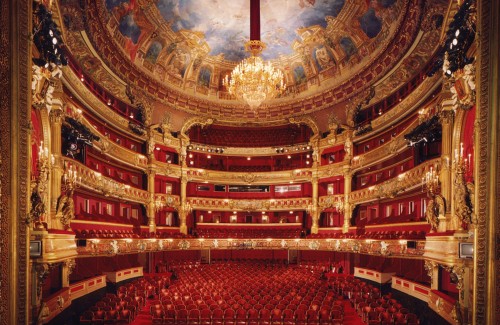
Opened -
Capacity -
Architect -
Style -
La Monnaie - National Opera of Belgium La Monnaie - National Opera of Belgium
Today the National Opera of Belgium, takes the name of the theatre in which it is housed. Therefore, la Monnaie or de Munt refers both to the structure as well as the opera company.
As Belgiuns leading opera house, it is one of the few cultural institutions which receive support from the federal government of Belgium. Other opera houses, are fundet by regional government.
This is a beautiful house with a rich history.
The theatre of Gio-Paolo Bombarda, 1700 to 1818
The first permanent public theatre for opera performances of the court and city of Brussels was built between 1695 and 1700 by the Venetian architects Paolo and Pietro Bezzi, as part of a rebuilding plan following the bombardment of Brussels. It was built on the site of a building that had served to mint coins. The name of this site ''la Monnaie'' ("the Mint") remained attached to the theatre for the centuries to come. The construction of the theatre had been ordered by Maximilian II Emanuel, Elector of Bavaria, at that time Governor of the Habsburg Netherlands. The Elector had charged his ''"trésorier"'', the Italian Gio-Paolo Bombarda, with the task of financing and supervising the enterprise. The date of the first performance in 1700 remains unknown.
By the 18th century ''la Monnaie'' was considered the second French-speaking stage after the most prominent theatres in Paris. Under the rule of Prince Charles Alexander of Lorraine, who acted as a very generous patron of the arts, the theatre greatly flourished. At that time it housed an opera company, a ballet and an orchestra. The splendour of the performances diminished during the last years of the Austrian rule, due to the severe politics of the Austrian Joseph II, Holy Roman Emperor Emperor Joseph II.
After 1795, when the French revolutionary forces occupied the Belgian provinces, the theatre became a French Departmental institution.
Amongst other cuts in its expenses, the theatre had to abolish its ''Corps de Ballet''. During this period many famous French actors and singers gave regular performances in the theatre during their tour of the provinces of the Empire. Still a consul, Napoleon on his visit to Brussels judged the old theatre too dilapidated for one of the most prestigious cities of his Empire. He ordered plans to replace the old building by a new and more monumental edifice, but nothing was done during the Napoleonic rule. Finally, the plans were carried out under the auspices of the new United Kingdom of the Netherlands and the Bombarda building was demolished in 1818.
The theatre in the 20th century
Renovations on the Poelaert building were required shortly after the opening due to faulty foundation work; the early 20th century saw an additional story added; and in the 1950s, a new stage building was added. By 1985 it was determined that complete renovation was needed. Features such as raising the roofline by 4 metres and scooping out the stage building area - in addition to creating a steel frame to strengthen the load-bearing walls and increasing backstage space - characterized this two-year project. However, the red and gold auditorium remained basically the same. The canvas of the ceiling painting was temporarily removed for restoration and only put back in 1999. It was temporarily replaced by a copy in much brighter colors that was painted directly on the stucco ceiling.
The entrance hall and the grand staircase underwent a radical makeover, although original features such as the monument by Belgian sculptor Paul Du Bois honouring manager and musical director Dupont (1910), and a number of monumental paintings (1907-1933) by Emile Fabry were preserved. The Lièg architect Charles Vandenhove created a new architectural concept for the entrance in 1985-86. He asked two American artists to make a contribution: Sol LeWitt designed a fan-shaped floor in black and white marble, while Sam Francis painted a triptych mounted to the ceiling. Vandenhove also designed a new interior decoration for the ''Salon Royal'', a reception room connected to the Royal box. For this project he collaborated with the French artist Daniel Buren.
Now seating 1,700, the renovated theatre was inaugurated on 12 November 1986 with a performance of Ludwig van Beethoven Beethoven’s ''Symphony No. 9 (Beethoven)|Symphony No. 9''.
In 1998 the major part of the vacant Vanderborght Department Store building and a neo-classical mansion, both situated directly behind the theatre, were acquired by la Monnaie. The edifices were renovated and adapted to house the technical and administrative facilities of la Monnaie, previously spread all over the city. The building also contains large rehearsal halls for opera, the ''Malibran'', and orchestra, the ''Fiocco''. They can also be adapted for presenting public performances.

